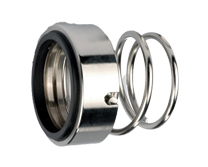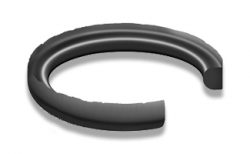Bitesize Sealing Tips on Mechanical Seals
Tips on Mechanical Seals for virtually any application
M Barnwell Services offers an extensive selection of Mechanical Seals for the highly exigent applications. Our Mechanical Seals are one of the most efficient methods for rotating shaft sealing. They are proven to be lasting and of high quality.
Mechanical Seals are used in an extensive range of rotating equipment and pumps globally, they prevent fluids and gases from withdrawing into the environment.
A Mechanical Seal is a mechanism that joins systems and equipment together, whilst preventing leakage and contamination. Furthermore, it’s a system of keeping liquid inside the vessel, where a turning shaft moves via still casing or sporadically, where the casing turns around the shaft. It contains two lapped faces placed perpendicular to the axis of the turning shaft. One face is fastened to the equipment housing or vessel, whilst the other face is fastened to the shaft and turns with it. Wear and rubbing heat formation is managed by preserving a coat of lubricant among the seal faces.
The pumps start-up system could be critical when mechanical seal issues emerge. If the correct procedures are not carried out in order to secure the mechanical seal whilst the pump is being launched, the seal can get damaged. To ensure the mechanical seal don’t run dry, the stuffing box must be regularly vented.
In some cases, a pump in a critical application is attached to a reserve pump in case issues arise. Nevertheless, when the mechanical seal in the pump is not in use for a long spell of time, the seal is prone to harden, deform or attach to the shaft. Which can, of course, cause failure.
If this happens, it is important to examine the seal in order to ascertain what contributed to the damage.
Below are few examples of seal failure modes:
Thermal Degradation
Frequently accompanied by compression set, the seal shows radial cracks on surfaces dealing with the highest temperatures. In addition, the surface becomes shinier, which is a sign of softening.
Abrasion
Seal surface may have some loose particles and scrapes. Grazed lines on the flat surface parallel to the direction of motion. Excessive wear – lacerations may be deeper and there may be breaking in places.
Chemical Degradation
Seal develops cracks, blisters, and discoloration, may be flaky and start to crumble. Loss of shape and integrity and change in hardness can lead to seal faces wearing quicker than usual. Furthermore, the degradation in some cases is only observable by measuring of physical properties.
Compression Set
Seal becomer less circular, and has flattened surfaces (flat sided oval), it has taken shape of the groove and is unable to recover to its original shape.
Extrusion or Nibbling
The edges of the seal are nibbled, chipped or ragged (usually on a low-pressure side). Consequently, in severe cases, shaving can occur and the surface may be peeled off.
If you would like more information about seal failures, please see our O Ring Failure Guide.
M Barnwell Services is the UK’s largest independent stockist, manufacturer, and distributor of fluid sealing products and services. For more information about Barnwell O Rings, click here, or to download a brochure, click here. For more information on our range of products, please click here.
E & OE. M Barnwell Services endeavours to make sure all the content is correct. Information has been gained from manufacturing partners.







